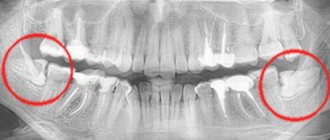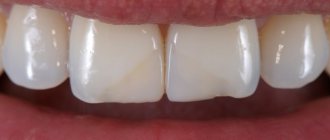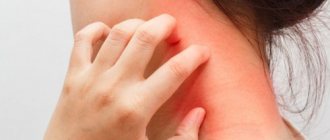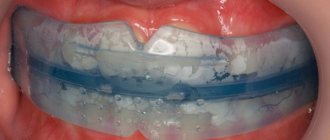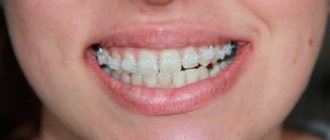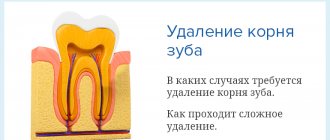797
Removing diseased teeth has always been considered a simple and effective way to get rid of the pain and discomfort they cause.
The development and manufacture of instruments for this operation was an equally important task. The first document containing information about the use of special instruments for tooth extraction dates back to the 17th century BC.
The papyrus contained images of a device similar to forceps, which could presumably be used to remove teeth.
The ancient Indian healer Sushtra divided tools for tooth extraction into forceps and special levers. The latter can be considered the prototype of modern elevators.
General overview
A dental elevator (lat. Elevator - lifting) is a hand-held dental instrument designed to remove dental roots and/or dystopic teeth by loosening and turning them out.
In terms of its action, the elevator is a classic lever and consists of 3 elements:
- working part (cheeks);
- pens;
- a long, narrow element connecting the cheek to the handle.
The cheek has the appearance of a convex-concave groove of oval, rectangular or spear-shaped. It can be symmetrical or asymmetrical, directed at different angles to the connecting part, with a mirror reflection or not.
A wide variety of shapes of the working part and its positions relative to the handle and connecting rod allows you to select an instrument that is optimally suited to perform the task facing the surgeon.
Elevators are made of chrome-nickel-molybdenum steel. Requirements for the composition and quality of the alloy are regulated by GOST 30208-94 (ISO 7153-1-88) and R 50328.1-92 (ISO 7153-1-88).
For the manufacture of elevators, steel grades B, C or D (20X13, 30X13, 45X14) are used. Tools made by powder metallurgy have the best quality. Fine steel powder containing alloying additives is pressed into a mold and sintered.
Nerve removal
Removal of the nerve is carried out in the treatment of advanced caries, injuries, and prosthetics. The coronal part is preserved.
Types of pulp extraction:
1. Vital - the pulp chamber is opened, the doctor expands and cleans the canals. Medicines are administered to relieve the inflammatory process. A temporary filling is installed. At the next visit - permanent.
2. Devital – a drug is installed on the pulp tissue, which causes the cessation of its activity and a temporary filling. After a few days, the pulp is removed and the tooth canals are cleaned. Then a permanent filling is installed.
Types and purpose
Depending on the shape of the cheek and its position relative to the connecting part, the following main types of instruments are distinguished:
- straight;
- bayonet-shaped;
- angular.
The bayonet-shaped design is a subtype of the straight one. In addition to the above types, there are also special tools designed to perform more specific tasks , in particular, elevators for removing individual root fragments, wisdom teeth, etc.
Many instruments belonging to one of the above groups bear the name of their developer - Lecluse, Vint, Barry, Pott.
For what purpose is the wound filled with alvostasis with a sponge after tooth extraction and what effect does the drug have?
Come here to find out in what cases socket suturing is performed after tooth extraction.
At this address https://www.vash-dentist.ru/hirurgiya/udalenie-zubov/stomatologicheskogo-shovnogo-materiala.html you will find an overview of suture material for dental surgery.
Straight
The working and intermediate parts of a straight elevator are located in a straight line. The cheeks can be rectangular, oval or bayonet-shaped. Their edges are usually thinned and pointed. Some have notches that increase the adhesion strength to the root being removed.
Direct elevators are used primarily for removing dental roots and dystopic teeth, including maxillary 3rd molars.
The most famous straight design was developed by Lecluse, and bears his name. The most notable features of the Lecluse elevator are the handle, attached at right angles to the connecting part, and the bayonet-shaped cheek.
In appearance, Lecluse's instrument resembles a corkscrew. Due to its considerable length and power, it is used for extraction of lower “eights”.
Angular
The peculiarity of the corner elevator is that the spoon bends in relation to the connecting part at an angle of approximately 120 °C. This makes it convenient to create leverage on the roots of teeth in various directions.
The bend can be with a right or left turn (“away from yourself” or “towards you”). The spoon may be jagged and its shape is usually oval or spear-shaped.
The corner elevator is most often used to remove individual roots and dystopic teeth. In this case, the convex part rests against the wall of the hole, and the concave part is directed towards the root to be removed.
Angular tools include Winter, Barry, and Pott elevators. All of them have a handle located perpendicular to the connecting part. These are powerful tools that allow effective luxation (Latin luxatio - displacement, dislocation) of the root and subsequent removal.
Bayonet-shaped
The bayonet elevator is a straight elevator. Its cheek is shaped like the tip of a spear, one side is smooth, the other is convex.
An example of using a bayonet-shaped instrument: with a completely destroyed crown of the 1st molar and a thick interradicular septum, it is used to separate the roots and dislocate and remove them separately.
The Lecluse elevator, which also belongs to the bayonet type, is used to remove third molars on the lower jaw. Its length and power are quite sufficient for this task.
However, you need to act carefully, since there is a danger of dislocation of the neighboring teeth on which the instrument rests.
To remove root fragments
To remove separated roots or fragments thereof, it is convenient to use instruments with very thin cheeks, sometimes located on both sides of the instrument and in different directions to each other (“away from you” and “towards you”). The surgeon holds such an instrument in the “writing pen” manner.
Tooth root removal
If the condition of the tissues around the tooth is good, there are no inflammatory processes, then the molar itself and the crown can be saved.
Tooth root removal
Indications for root resection:
- mechanical injury
- inflammation of the tissue around the root
- preparation for prosthetics
- complete destruction of the crown without the possibility of restoration.
The removal method and tools used by the doctor depend on the patient’s diagnosis. After anesthesia and treatment of the oral cavity with antibacterial drugs, the root is drilled into several parts and gradually removed from the hole. It is washed, stitches are applied if necessary, and a tampon is installed to stop bleeding.
Important nuances when working with the tool
The success of elevators in root removal depends critically on the correct choice of tool and its proper use.
Before choosing a tool, a careful examination of the root and tooth to be removed is carried out. First of all, the strength of the crown is assessed, whether it can withstand the pressure of the forceps.
If there is reason to doubt this, select an elevator design that best suits the task ahead. To prevent the crown from interfering with work, it is bitten off.
Methods of using elevators depend on the severity of the bend of the roots being removed:
- If the curvature is insignificant , the root is deflected with the tool towards the curved side, applying the load in the direction of greatest compliance. This causes the socket to enlarge and the tooth to dislocate.
- If the roots of the 3rd molars are curved medially , the crown is sectioned, an elevator is inserted from the distal side, the crown is shifted distally and removed.
- If the medial and distal roots are bent in different directions , the tooth is divided into three parts, an elevator is inserted from the side opposite to the root being removed, and the distal and medial roots are shifted in the direction of the bend. After the periodontal ligaments have ruptured, the root is removed.
- When the root is bent in the lingual or buccal direction, the elevator expands the periodontal gap in the plane of the root bend and removes it.
- Premolars with a completely destroyed crown and a significant thickness of the alveolar process are removed by inserting cheek counters between adjacent teeth and the roots of the premolar.
- Direct elevators are advisable to use when removing wisdom teeth , especially if the clinical picture is accompanied by a problem with opening the mouth. The working part is located along the medial buccal surface of the figure eight.
Serious attention should be paid to sterilization of instruments. If disinfection is insufficient, transmission of infection is possible both from doctor to patient and from patient to doctor.
There is a certain method for sterilizing dental instruments, which involves performing several successive operations: soaking in an antiseptic solution, rinsing with running water, immersing in a biosol solution heated to 40°C, drying in the open air.
Easy Graft bone replacement material and its features.
In this publication we will tell you whether supernumerary teeth are always removed.
Here https://www.vash-dentist.ru/hirurgiya/udalenie-zubov/vse-tonkosti-lazernogo.html let’s take a closer look at the method of laser tooth removal.
Types of procedure
The method of removing a molar, incisor or canine depends on the patient’s diagnosis and his response to conservative therapy. Types of surgical intervention:
- complete – the doctor removes the entire dental unit along with the roots
- resection – removal of the root apex with granuloma, cyst. The remaining roots are preserved and can be used for restoration or prosthetics
- hemisection—the doctor removes 1 affected root. The dental crown is preserved.
In addition, there are concepts of “simple” and “complex” removal. The latter involves extraction of a multi-rooted molar (wisdom tooth) with possible suturing.
Possible complications
Although complications from tooth extraction using an elevator are relatively rare, they are not only possible, but some of them can be quite serious.
Surgical dental practice notes the following complications when using elevators:
- Bleeding due to damage to large vessels.
- Damage or removal of the rudiments of permanent teeth when removing “milk jugs,” in particular, the follicle of wisdom teeth. This is facilitated by the interdental septum, which is elastic and adapts to the changeable bite.
- A puncture wound on the cheek of the tissue adjacent to the tooth being removed. The development of bleeding is dangerous if a large vessel has been damaged, for example, a branch of the carotid artery.
- Infection of a patient with a poorly sterilized elevator, development of alveolitis.
- Luxation (rupture of the periodontal ligament) of adjacent teeth due to improper use of the elevator.
- The tip of the instrument breaks off and gets stuck in the wound.
- Alveolar bone fracture. Can occur when removing buccal or medially curved roots - in cases where the load on the instrument is applied to the tips of the roots.
In dental practice, a curious case was recorded when, a month after successful tooth extraction, a granuloma formed in the area adjacent to it.
After its removal, a piece of the dental surgeon's nail was found in it, which was cut off with an elevator during root removal.
The video provides additional information on the topic of the article.
Contraindication to tooth extraction
Removal is carried out in the presence of strict indications, and not at the request of the dentist. Therefore, there are no absolute contraindications. Especially with acute pain, the presence of a purulent focus.
Contraindications to tooth extraction
If the patient does not suffer from pain, removal is carried out electively, meaning there are conditions in which surgery should be postponed. Tooth extraction is not performed in the following cases:
- infectious diseases in acute course
- malignant process in the active stage
- severe heart disease
- post-infarction state during the rehabilitation period
- history of blood diseases
- pregnancy in women - especially the 1st and 3rd trimester
- baby teeth in children, if the photographs do not reveal the rudiments of permanent ones.
For patients with blood diseases, malignant tumors, and heart pathologies, it is advisable to undergo surgery in the Department of Maxillofacial Surgery.
Reviews
Elevators are used in cases where extraction of a tooth or root for some reason (most often due to destruction of the coronal part) cannot be performed with forceps.
Despite the fact that this operation is considered more complex, the patient, thanks to anesthesia, in most cases does not experience any more discomfort than when removed with forceps.
If you had your teeth removed using an elevator, tell us what sensations this was accompanied by, were there any complications during wound healing? The comment form is located at the bottom of this page.
If you find an error, please select a piece of text and press Ctrl+Enter.
Tags: tooth extraction
Did you like the article? stay tuned
Previous article
Icone infiltration system or “liquid filling” for teeth
Next article
What is odontoma, how dangerous is it?
Regular tooth extraction
This type of extraction is performed on an outpatient basis and does not require hospitalization. The doctor treats the surgical field with an antibacterial agent and administers anesthesia. The type of anesthesia depends on the location of the tooth and the age of the patient.
Next, the doctor separates the tooth from the ligaments, loosens it and gradually pulls it out of the socket. Its edges are compressed after the operation. A gauze pad is placed on the wound to stop bleeding.
Regular tooth extraction
Using forceps
For different groups of teeth, tweezers of different shapes are used. Each of them has a branch (handle), a lock and a cheek (working part).
Technically, they are all similar to each other, but have some differences in structural details. This need for differences arose because the functionality of each tool is limited and the most suitable one is needed for various types of operations.
The upper or lower jaw being treated, the location of the tooth are taken into account (the angle of work with it and the complexity are taken into account), whether the roots or crowns are removed. Each cheek shape must correspond to a specific tooth structure.
Read also: How long does it take for gums to heal after tooth extraction?
Tool holding methods
When a tooth is removed, the doctor operates with his right hand using forceps.
The location of the fingers should be such that it is convenient to move and move apart the forceps branches. The forceps themselves are held in a special way, in which it is easiest to move them under the gums along the dental axis.
There are two main ways to hold tweezers:
- Holding two handles with the right hand using 1, 2, 3 fingers in such a way that they (fingers) are located between the jaws so that they can be moved apart at any convenient moment. When the handles are connected, the 4th and 5th fingers are removed.
- Used when working with the upper row of teeth : the thumb clasps one jaw, and the 5th and 4th fingers hold the other. The tips should rest against the palm of your hand to make it easier to advance the tool. Then the handles are moved apart, the 3rd finger is straightened, and then they are connected together with the bend of the 5th and 4th fingers. When the 3rd finger is withdrawn after the forceps have been applied, squeezing all fingers except 2.
